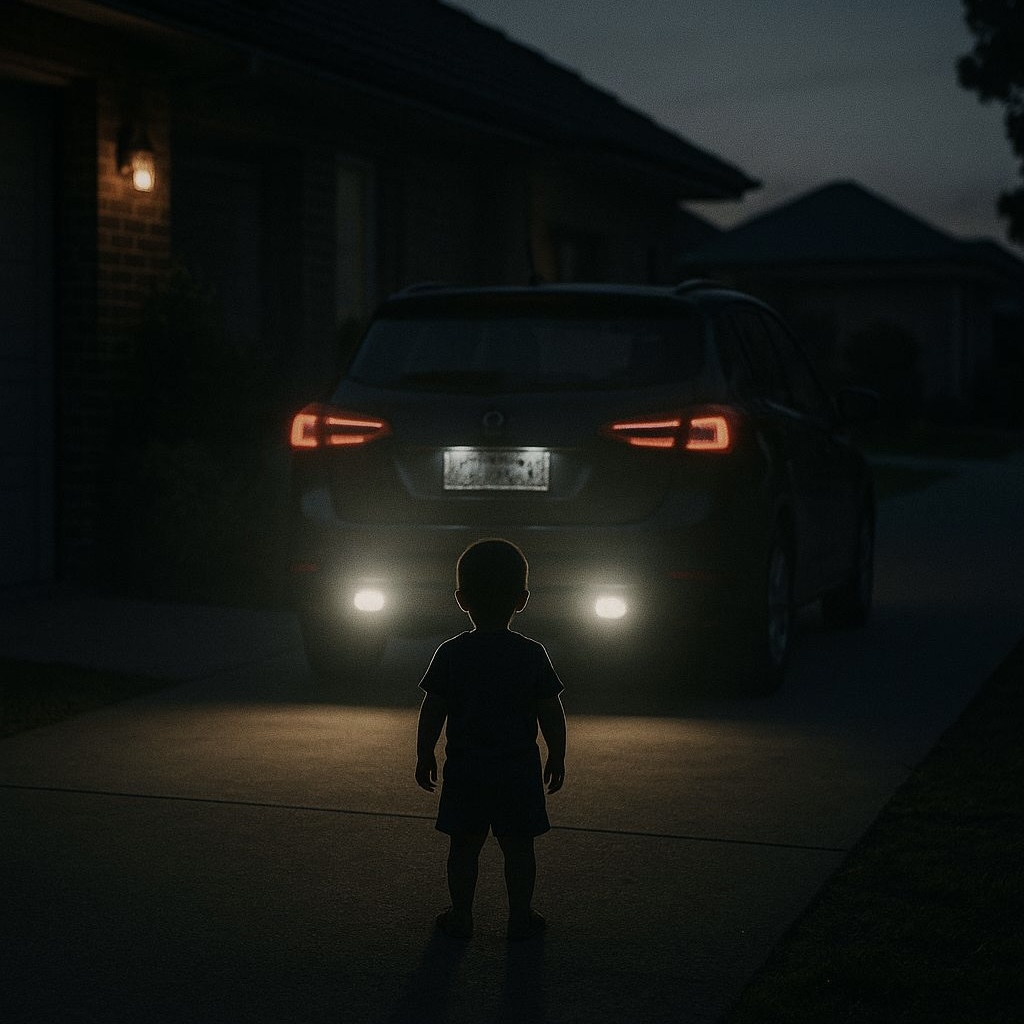
02 Jun Driveway Tragedies: The Small Habits That Can Save a Child’s Life
A heartbreaking reminder of just how dangerous driveways can be made headlines this week: a toddler in Sydney’s west was fatally struck in a driveway incident. It’s every parent’s worst nightmare and sadly, it happens more often than many realise.
Most Toddler Accidents Happen While Reversing. Statistics consistently show that the majority of driveway accidents involving children occur while a vehicle is reversing. Over 70% of these incidents involve a child being hit by a reversing car often by someone they know and trust, like a parent or family member.
Children under five are especially vulnerable, making the importance of knowing baby first aid critical. They’re small, quick, and can easily slip into a driver’s blind spot without being noticed. And in today’s world of high vehicles like SUVs and 4WDs, visibility is more limited than ever.
That’s why it’s critical to build safe driving habits, as well as keeping your baby first aid knowledge up to date.
Our Paramedic Founder Has Seen This Firsthand. RescueBlue’s founder is a critical care paramedic who has personally attended six driveway run-over incidents during his career. Each one was devastating. All of them were preventable.
Based on those real-world experiences, here are his top safety tips for families:
7 Simple Checks to Keep Kids Safe in the Driveway
No matter how short the drive, these habits could save a life:
1. Walk Around the Vehicle
Take a few seconds to physically check under and around your car. Don’t rely on sensors or mirrors they miss what your eyes won’t.
2. Know Where Every Child Is
Make eye contact with each child. If they’re too young to reliably stay put, make sure they’re safely inside the house or car before you move.
3. Lock the Doors
Children should be either securely inside the home or already strapped into the vehicle before you start moving.
4. Announce It
Say it out loud, “The car is moving now!” It alerts nearby children and adults, creating a moment of awareness.
5. Use Reversing Cameras and Mirrors. But Don’t Rely on Them
Cameras and mirrors help, but they don’t see everything. Use them as a backup, not your only check.
6. Reverse Into the Driveway, Not Out
Backing into your driveway while your child is with you means that later, when it’s time to leave, you can drive forward out — which is far safer. This small change significantly reduces risk.
7. Slow Is Pro
If you do need to reverse, do it slowly. Moving at a crawl gives any unseen person, especially a child, a chance to move out of danger.
No One Ever Thinks It Will Happen to Them
We often think of danger as something “out there” on highways, in busy intersections. But many of the most tragic incidents happen at home, in the most familiar places.
The good news? These risks are preventable. By forming simple habits and staying vigilant, we can all play a part in keeping our communities, and our children, safer. And by knowing baby first aid skills can make all the difference.
RescueBlue is committed to safety education for families, schools, and the wider community. For tailored baby first aid courses or parenting safety resources, get in touch with us.


